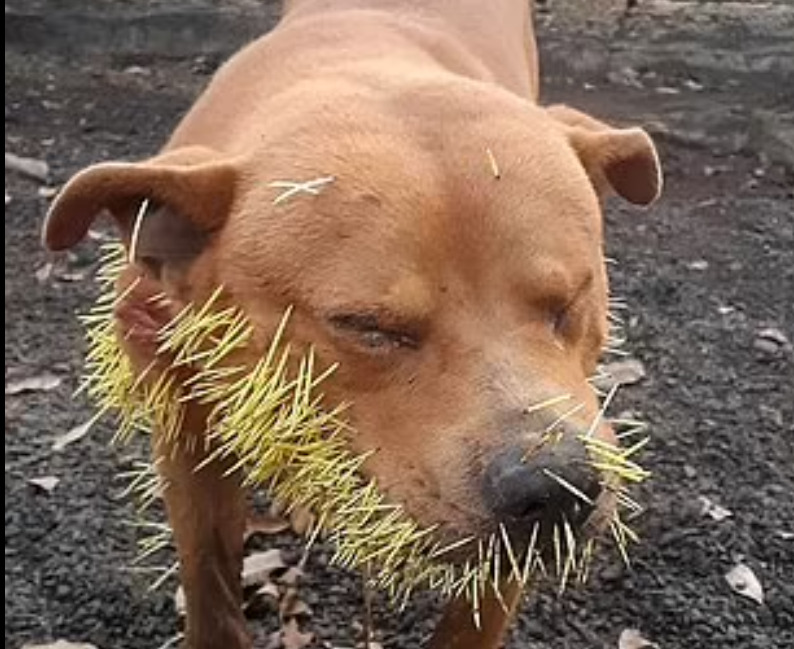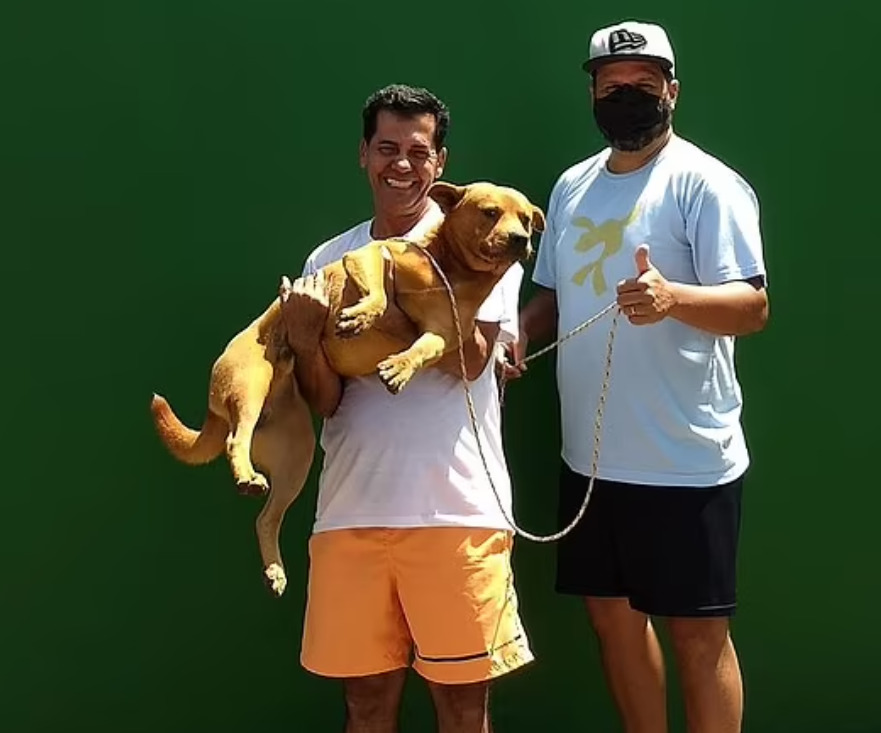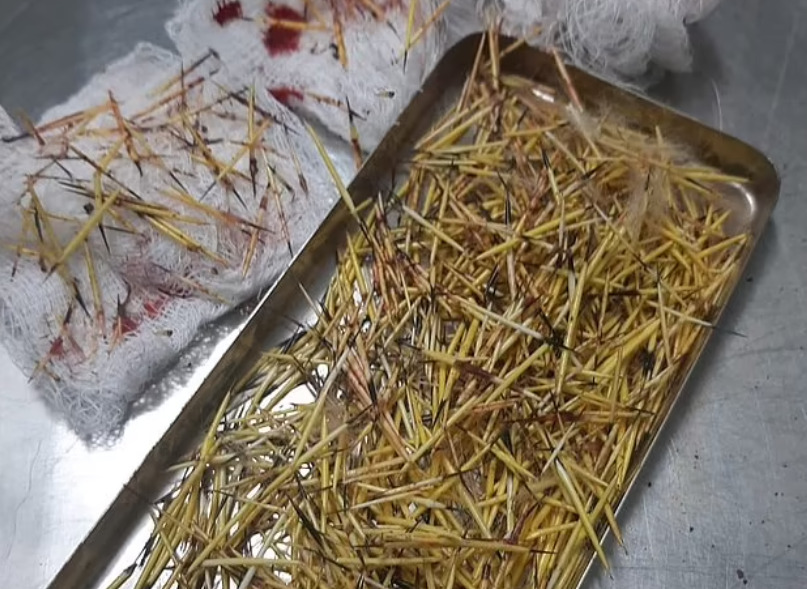In Brazil, a dog named Thor found itself in a dire situation when it encountered a porcupine, resulting in hundreds of quills embedded in its face. The incident occurred on February 20 in Sao Paulo.
Photographs revealed Thor, a golden brown canine, covered in numerous yellow quills, which had pierced its mouth, forehead, nose, ears, and legs. Unfortunately, Thor’s owner, an unemployed man named Adriano Bertoline, faced financial constraints that prevented him from covering the necessary veterinary expenses.

In a heartfelt plea for assistance, Adriano turned to the online community, seeking help for Thor’s treatment. He shared his distress on social media, saying, “Good morning, everyone… I woke up this morning and discovered my dog in this condition… Can anyone recommend a clinic or veterinarian who can come to his aid? I am unable to afford the costs.”
Fortunately, Dr. Jose Roberto Apolari, a local councilor, came across Adriano’s plea and immediately offered his support. Recognizing the dire circumstances, Dr. Apolari took charge, transporting Thor to a veterinary clinic and contributing towards the expenses incurred.

Remarkably, this marked the second time in a year that three-year-old Thor had tangled with a porcupine, resulting in these painful injuries. Adriano expressed his gratitude, stating, “Dr. Apolari was an angel in my dog’s life because I couldn’t afford a private veterinarian. I am currently unemployed and responsible for feeding four children at home.”
In the end, Dr. Apolari not only facilitated Thor’s medical treatment but also ensured his safe return home after the ordeal.

What causes dogs to exhibit aggressive behavior towards porcupines?
Dogs may attack porcupines out of curiosity, self-defense, or as part of their natural predatory instincts. When a dog encounters a porcupine, it may not recognize the danger posed by the porcupine’s sharp quills. Curiosity or territorial instincts can lead a dog to approach the porcupine and attempt to investigate or confront it.
In some cases, a dog might view a porcupine as a threat and act defensively, leading to an aggressive encounter. Dogs with a strong prey drive may also see porcupines as potential prey and attempt to chase or capture them.
However, these encounters often end in pain and injury for the dog, as porcupines have a defense mechanism where they can release or embed their quills into the attacker. These quills are barbed and can be very painful and difficult to remove, leading to discomfort and sometimes serious health issues for the dog.
It’s essential for dog owners to be aware of the potential risks posed by wildlife encounters and take precautions to keep their pets safe, such as keeping dogs on leashes and avoiding areas known to have porcupine populations.
What to do when your dogs get attacked by other animals?
When your dogs are attacked by other animals, prioritize their safety and well-being. First, ensure your safety, avoiding dangerous situations, especially if the attacking animal is larger or more aggressive. If you’re in a public area or near people, call for help immediately to get assistance.
Attempt to distract or scare the attacking animal if it’s safe to do so. Yell loudly, wave your arms, or use loud noises to startle them. You can also use objects like a stick, chair, or jacket to create a barrier between the attacking animal and your dog.
Avoid using your bare hands to physically separate the animals, as this can lead to injuries. Once the attack has been stopped or your dog has escaped, carefully examine your dog for injuries. Seek immediate veterinary attention if they are bleeding or seriously injured.
Document the incident, noting details that may be useful for legal action or reporting. Contact your local animal control agency or authorities if the attacking animal is known and poses a danger to others. Provide them with as much information as possible.
Even if your dog appears unharmed, consult a veterinarian as some injuries may not be immediately visible but can lead to infections later on. To prevent future attacks, keep your dog on a leash in public, ensure they are up-to-date on vaccinations, and stay vigilant about their surroundings.
Remember that your safety and the safety of your dog should always be the top priority. If the attack is severe or you cannot control the situation, call 911 or emergency services for immediate assistance.
Conclusion
When your dogs are attacked by other animals, it’s crucial to prioritize their safety and well-being while ensuring your own safety. Take immediate action to stop the attack, call for help if necessary, and try to prevent further harm to your dog. Document the incident, report it to local authorities if needed, and consult a veterinarian to ensure your dog’s health. To avoid future incidents, take preventive measures and always prioritize safety in any encounter involving your pets.